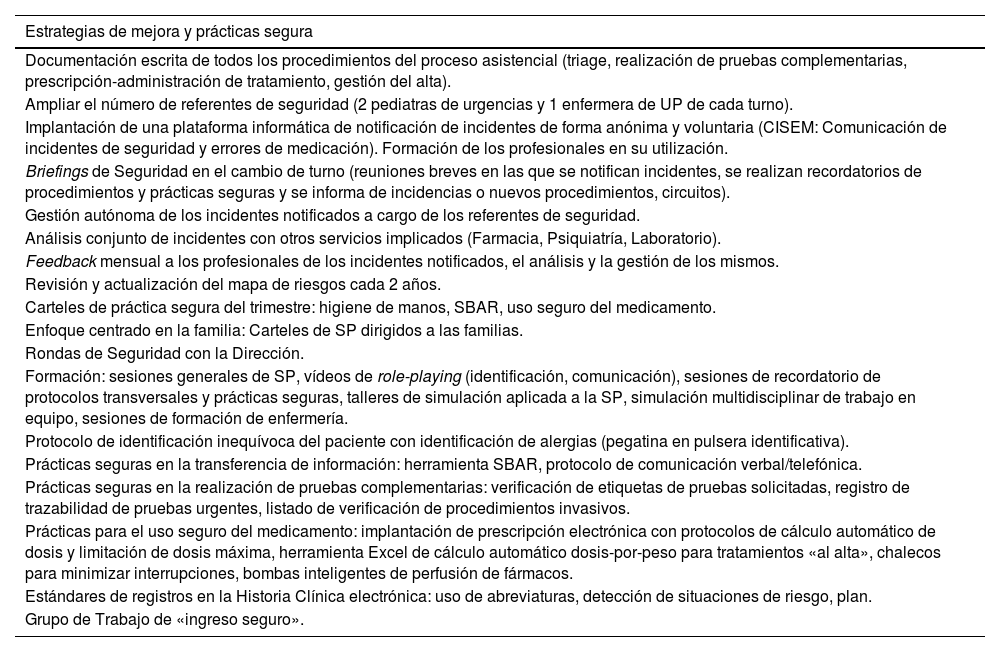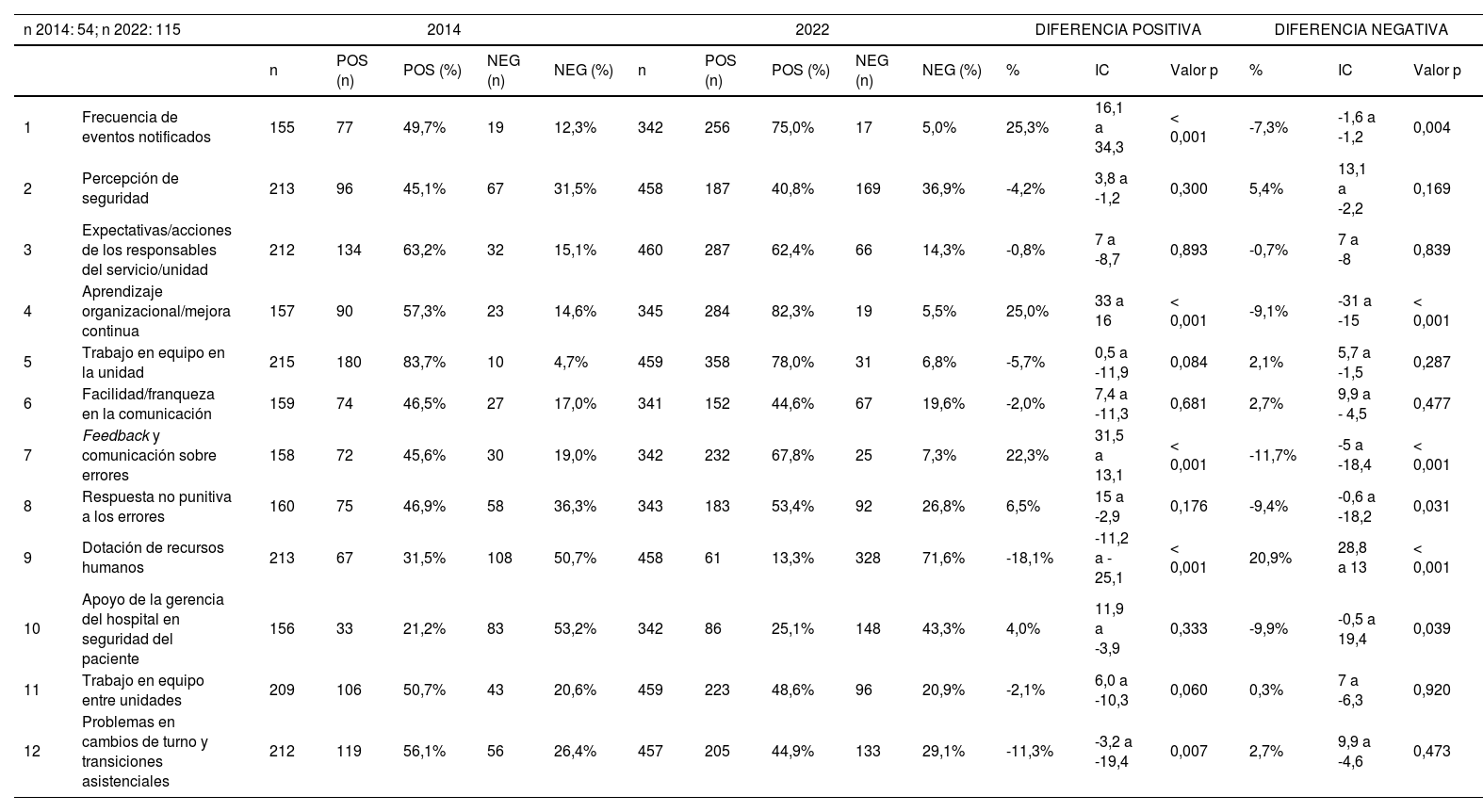La cultura de seguridad (CS) es una herramienta fundamental para minimizar los eventos adversos (EA) y mejorar la seguridad y la calidad asistencial. Nuestro objetivo, fue analizar la evolución de la CS de los profesionales sanitarios de una urgencia pediátrica (UP) tras la implementación de un sistema de gestión de riesgos (SGR) para la seguridad del paciente (SP) basado en la Norma UNE:EN:ISO 179003 y la ejecución de nuevas prácticas seguras para la acreditación Joint Commission International (JCI). Se describieron las fortalezas y debilidades actuales.
MétodoEstudio cuasiexperimental, unicéntrico. Participaron los profesionales de la UP. Se realizó una medición inicial de la CS a través del cuestionario Hospital Surveyon Patient Safety Culture (HSOPS) de la Agency for Healthcare Research and Quality (AHRQ) adaptada al español en el 2014. Se implementaron estrategias pro-seguridad del paciente entre el año 2015 y 2022. Se realizó una medición posterior en el 2022.
ResultadosLa tasa de respuesta en el 2014 fue de 55%, en el 2022 de 78%. En ambas ocasiones el colectivo con mayor participación fueron las enfermeras con 35,1 y 34,8%, respectivamente.
Tras las intervenciones mejoraron cinco dimensiones: frecuencia de EA (25,2%, p<0,001), aprendizaje organizacional (25%, p < 0,001), feedback y comunicación sobre errores (22,3%, p < 0,001), respuesta no punitiva a errores (6,5%, p = 0,176), y apoyo de la gerencia (4%, p = 0,039).
ConclusionesLas acciones realizadas influyeron positivamente en el aprendizaje organizacional y en la frecuencia de EA notificados, así como en la comunicación dentro del equipo. En cambio, la percepción de la CS no aumentó.
Safety culture (SC) is a fundamental tool for minimizing adverse events and improving safety and quality of care. Our objective, therefore was to analyze the evolution of the SC of healthcare professionals in a pediatric emergency department (PED) after the implementation of a risk management system for patient safety based on the UNE:EN:ISO 179003 Standard and the execution of new safe practices for Joint Commission International accreditation. At the same time describe the current strengths and weaknesses.
MethodsQuasi-experimental, single-center study. All PED professionals participated in the study. An initial measurement of SC was performed through the Hospital Survey on Patient Safety Culture (HSOPS) questionnaire of the Agency for Healthcare Research and Quality adapted to Spanish in 2014. Pro-patient safety strategies were implemented between 2015 and 2022. A subsequent measurement was performed in 2022.
ResultsThe response rate in 2014 was 55% and 78% in 2022. On both occasions the group with the highest participation was nurses with 35.1% and 34.8%, respectively.
Five dimensions improved after the interventions: frequency of adverse events (25.2%, p<0.001), organizational learning (25%, p<0.001), feedback and communication about errors (22.3%, p<0.001), non-punitive response to errors (6.5%, p = 0.176), and management support (4%, p = 0.333).
ConclusionsThe actions carried out had a positive influence on organizational learning and the frequency of adverse events reported and communication within the team. In contrast, the perception of SC did not increase.












